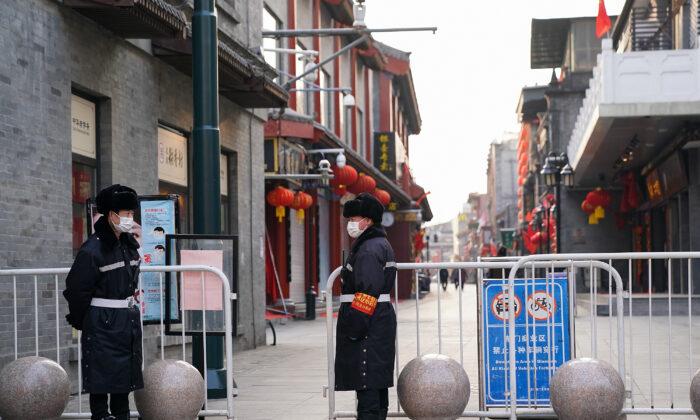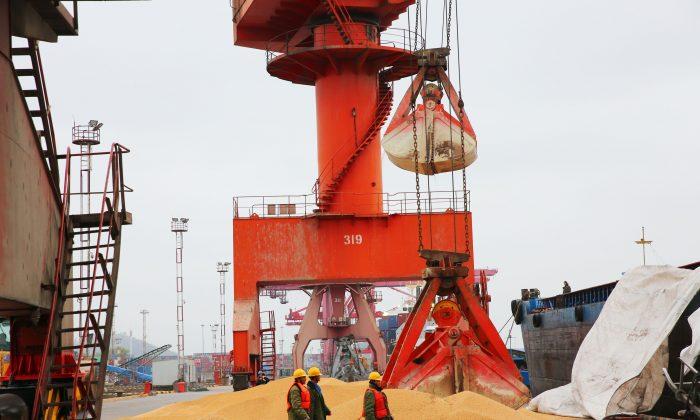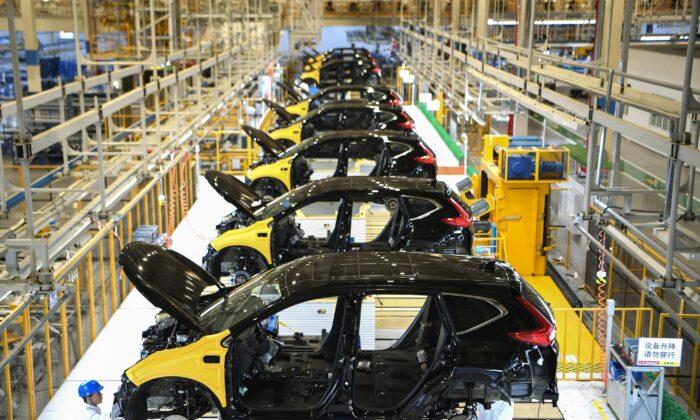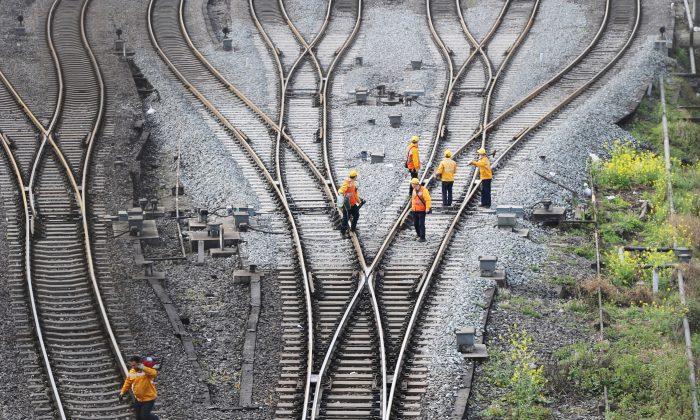News Analysis
China’s reported GDP after inflation
declined 9.8 percent in the first quarter, but data analysis reveals that urban consumption plunged by 48 percent, or five times faster, according to Enodo Economics, an independent macroeconomic and political forecasting company that focuses on China.
Despite
780 million mainland Chinese on coronavirus travel restrictions in February, official data from the National Bureau of Statistics (NBS)
reported that China performed much better than expected in the first three months of 2020. But year-over-year GDP before inflation shrank 6.8 percent—its first negative performance since 1992, and possibly the worst quarter since the 1960 mass starvation associated with Chairman Mao’s
Great Leap Forward.
China’s annual GDP growth since its 1979 market reforms has averaged 9.5 percent through 2017, a pace described by the World Bank as “the fastest sustained expansion by a major economy in history,”
according to the U.S. Congressional Research Service.
But the way China
collects and processes economic information is fundamentally different from that in the Western nations, because it is more a measure of political intention, and not economic activity.
The major Chines differences include: allowing politically motivated local governments to fabricate information; adding both productive and unproductive investments that do not create economic activity to GDP; and never writing down bad debts from massive boondoggles, such as
ghost cities.
Wall Street tends to rely on firms such as
Enodo Economics to restate the vast amounts of raw data released by the NBS to calculate China’s GDP under Western standards. The NBS delayed releasing that price data, but what it did reveal paints a grim economic picture.
With China’s exports as a percent of GDP peaking in 2006 at
36 percent, then falling to about 19.5 percent in 2018, the Chinese Communist Party (CCP) re-focused on stimulating domestic consumption growth.
From 2017 to 2019, China’s inflation adjusted urban consumption expenditure growth per capita averaged 7.8 percent. But that effort collapsed in the first quarter of 2020 with urban per capita consumption plunging by 48 percent. Per capita consumption in China’s much poorer rural sector fell also by 29.5 percent, according to Enodo Economics.
The NBS reported that China’s urban unemployment rate in February jumped to an
all-time high of 6.2 percent, from 5.2 percent in December. This would mean that 27.4 million people are out of work, according to calculations by South China Morning Post. But the NBS calculations do not include the
290 million migrant workers who provide the cheap labor that has driven China’s export sector. If migrant workers were included, Upright Asset
estimates that China’s unemployment rate would spike to 205 million.
Enodo Economics highlights that urban employment in China is dominated by millions of consumer-oriented small and medium enterprises (SMEs) that use their own or family cash to fund operations. A February
survey of 995 SMEs conducted by Peking and Tsinghua universities found that 85 percent had insufficient cash to survive for three months.
With most SMEs unable to pay their rent, suppliers, and utilities, millions of Chinese businesses cannot re-open and employment will not recover. Enodo Economics states that as a result of this cash-crunch, the Chinese “consumer is down and out.”
Enodo Economics believes that the CCP will do “whatever it takes to preserve the veneer of stability,” including propping up stock markets and the value of the yuan. But China now faces the highest risk of political and geopolitical instability since opening-up the economy four decades ago.





